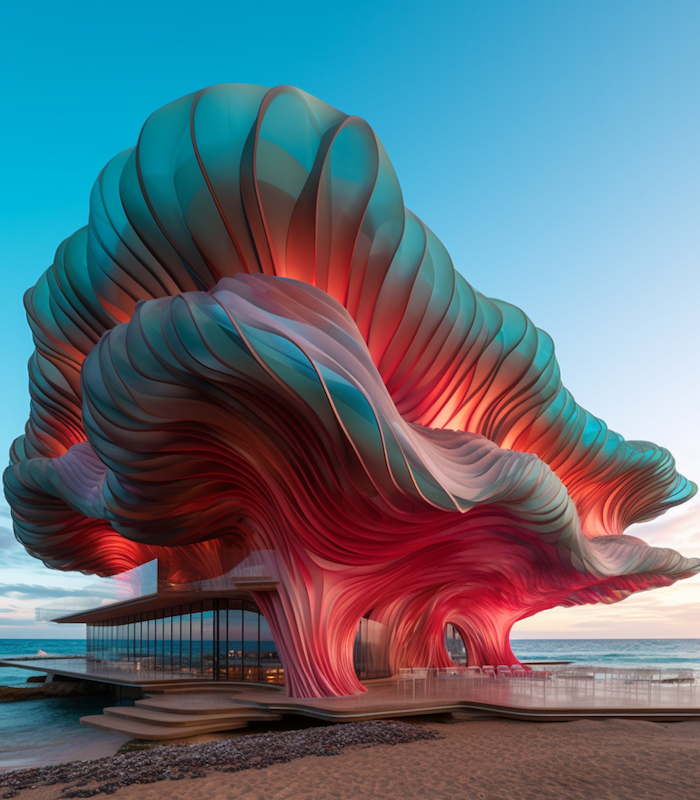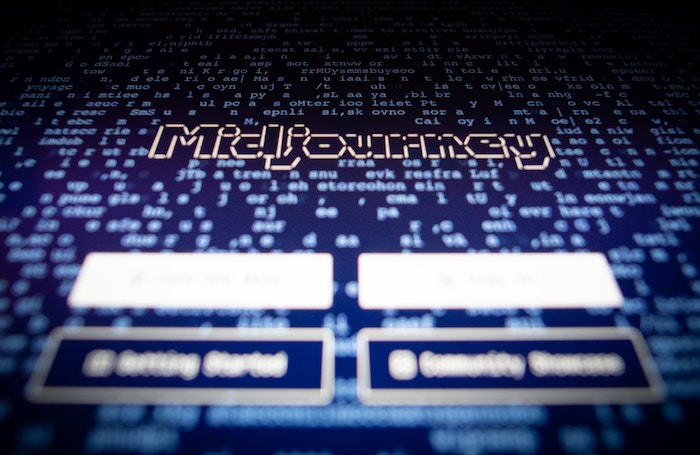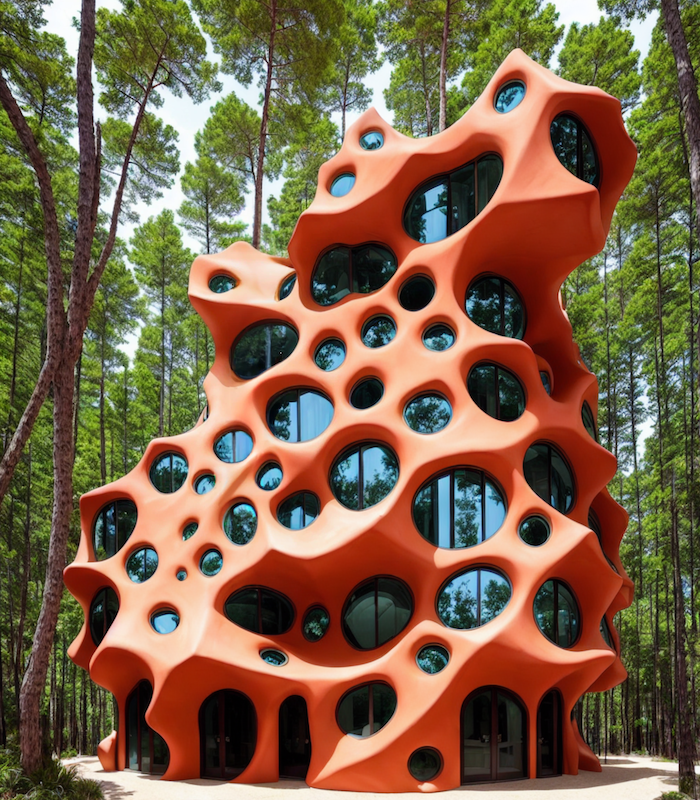The arrival of AI-powered ‘diffusion modelling’ – most notably Midjourney – has been hailed as either the death knell for the creative architect, or the dawn of a design revolution that will empower architecture like never before, depending on which AI camp (‘doom’ or ‘bright future’) you sit in.
Architect and AI hybrid artist Hamza Shaikh, who is a leading voice on the integration of human-led AI creativity within architecture, and also author/editor of RIBA book Drawing Attention: Architecture in the Age of Social Media, sits in the bright future camp albeit with cautionary caveats. Architects need to embrace truly hybrid methods, Hamza believes, while also suggesting that it might not be long before RIBA work stages could evolve to take account of AI workflows.
So, with the genie very much out of the bottle and architects using the likes of Midjourney, Stable Diffusion and DALL-E regularly, how is it currently being used in practice?
What is Midjourney?
Midjourney is a text-to-image generative AI app, driven by simple language instructions, that will pull in images from scratch or go to work on your outline sketch proposal. You can ask for modifiers to be applied, such as building types, materials and design styles, plus character modifiers that will embed the style of anyone with a web presence, such as an artist, photographer or – wait for it – another architect.
The software has an amazing capacity to blend the images it pulls in from these source references with sometimes recognisable and often totally unexpected results.
This blending capacity is Midjourney’s best known feature and has given rise to AI co-created artworks. LA-based architect and conceptual artist Hassan Ragab has become something of an Instagram star for his unlikely architectural blends, which demonstrate just how powerful this morphing capability can be in the right hands.
“You can think of these tools as being like a sketchbook with paper and a pencil,” he says. “I'm really interested in these tools because of their potential, but it's not because of what they can offer for architecture right now.”
“It’s because generative AI tools are changing my entire perspective about what architecture is and what makes architecture beautiful. It’s changing my methodologies and changing my identity as an architect.”

Where is the skill in using Midjourney?
However, despite the tech’s potentially transformative nature, its rapid take-up and the quality of the images it can conjure, some still ask where the skill is in prompting an AI generator to produce an image. It’s a question particularly prescient to architecture and specifically to how humans and technology can work together in the future.
"If you ask where the skill is in using Midjourney, I would ask where is the skill in using Revit or Rhino?” Hamza counters. “Anyone can learn to type commands and drag a mouse, yet nobody questions one's agency using 3D modelling software.”
He continues: “I think of it this way - there are levels of proficiency when it comes to using these softwares. With traditional software you can draw and extrude a simple box. Could you call that a skill? I'd say no. In the same way, typing a sentence or two into Midjourney is not skilful either.
“However, using Rhino to achieve a client's brief through expert design created through complex modelling and using novel creative commands is a very valuable skill. In the same way, using generative diffusion software to create, iterate and design entire visual sets with nuanced prompting techniques mixed with hybrid workflows and craft is also a valuable skill. We are only getting better at using these softwares, and soon no one will question the 'skill' involved in using generative AI tools as the gap between beginner and advanced will become increasingly pronounced.”

Is there a debate to be had around Midjourney and copyright?
Where does the debate over copyright begin?
There is inevitably a debate about to what extent reference-sourcing tech is simply intellectual property theft, and it is a sensitive issue. Fellow Midjourney creator Tim Fu of Zaha Hadid Architects can be seen discussing this issue on the BlessedArch YouTube channel.
Is there a difference between the copyright of design and style?
His take is that there is a clear difference between the copyright of a design and a style. Just as there would be a difference between faking Van Gogh’s Sunflowers and doing a painting of your own in a Van Gogh style, there would be a difference between the wholesale copying of a Frank Gehry building and assimilating some aspects of his trademark style. Architects have always referenced existing buildings and styles in their work, he suggests.
So, what are you ok to generate?
Prompting Midjourney to design a major waterside art gallery in a Frank Gehry style might land you in trouble, whereas if you ask for a Gehry-informed barn conversion, which Midjourney would do at the drop of a hat, feels more like grey area territory.
Are there any examples of copyright infringement cases involving Midjourney?
According to Forbes, the US Copyright Office recently ruled that illustrations used in a comic book that were created by Midjourney should not be protected by copyright law. Creator Kristina Kashtanova did not originally disclose that her illustrations were made by Midjourney, but when this information came to light the Copyright Office ruled that only images created by humans can obtain copyright protection. The office then rejected the creator’s claim that her text prompts were authorship.
So where does that leave us?
It's a fast moving, ever-changing landscape, so who knows? But at this moment, architects use generative AI tools in the conceptual phase to help sketch out ideas and bring them to life in stunning fashion.

How are architects using Midjourney right now?
Hamza says that Midjourney’s greatest strength is its ability to extract what he calls a “source image’s DNA” (it does not simply copy parts of an image, but instead identifies its defining characteristics) and then embeds and blends it in a fresh image, prompted by the user’s referencing, while allowing variable levels of flexibility and randomness into the outcome.
“Pair this with the ‘describe’ tool and referencing ‘seeds’, then you have an ultra-powerful pre-concept ideation tool that can utilise the DNA of any source style from a drawing/artist/architect,” he adds.
Hamza also says that diffusion models such as Midjourney are already being tested on early-stage design projects at practices worldwide such as Zaha Hadid Architects and argues that the challenge for architects is to find ways of incorporating these tools into their workflows in nuanced, responsible and hybrid ways.
He also suggests that diffusion models will almost certainly replace high-end CGI rendering software in the near future, such as their speed and ease of use. Rendering engines are some of the most expensive tools to buy and run for practices. Many small practices in particular will be happy to adopt diffusion modelling as a low cost alternative to GPU hardware and training, he adds.
Are you using Midjourney or other generative AI in your practice? Tell us how you use it and what you think of it – has it improved your processes?
Hamza Shaikh will be presenting an online, weekend workshop on AI HYBRID CRAFT: Midjourney for Design – Beginner to Advanced on 8 to 9 July 2023.
Purchase Hamza’s RIBA book: Drawing For Attention: Architecture in the Age of Social Media.
Learn more about AI with our feature - Artificial Intelligence: how can architects get the best out of ChatGPT?
Thanks to Hamza Shaikh, Architect and Author; Hassan Ragab, Architect and Conceptual Artist.
Text by Neal Morris and Paul Hirons. This is a Professional Feature edited by the RIBA Practice team. Send us your feedback and ideas.
RIBA Core Curriculum topic: Design, construction and technology.
As part of the flexible RIBA CPD programme, professional features count as microlearning. See further information on the updated RIBA CPD core curriculum and on fulfilling your CPD requirements as an RIBA Chartered Member.









